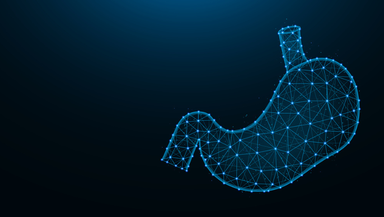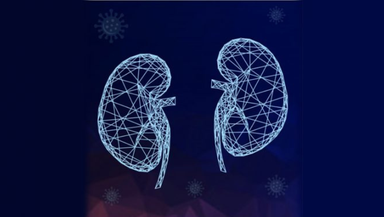How Do Doctors Decide Between Shockwave, Laser, or Ultrasound Lithotripsy

Medicine Made Simple Summary
Lithotripsy is a way to break kidney stones without open surgery. Doctors can choose from three main types: shockwave lithotripsy, laser lithotripsy, and ultrasound lithotripsy. Each has its strengths and limitations. Shockwave is done outside the body, laser uses a scope with a laser fiber, and ultrasound uses vibrations to break stones. Doctors decide based on stone size, hardness, location, patient health, and safety. This article explains each method and how doctors choose the best option for patients.
Introduction: Why different types of lithotripsy exist
Kidney stones are a widespread health problem, affecting millions worldwide. Not all stones are the same, and not all patients can be treated with a single method. This is why modern medicine offers multiple ways to break stones, including shockwave, laser, and ultrasound lithotripsy. Each method uses different technology and is suited to different situations. Understanding how doctors choose among them helps patients know what to expect and why a particular method is recommended.
Shockwave Lithotripsy (ESWL) explained
Shockwave lithotripsy is the most well-known and widely used noninvasive method. A machine outside the body generates powerful shockwaves that are focused on the stone using ultrasound or X-ray guidance. These waves pass harmlessly through the skin and tissues but shatter the stone into fragments. The fragments then pass naturally in urine. ESWL works best for stones located in the kidney or upper ureter, and for stones smaller than 2 cm. It is less effective for very hard stones or those located in the lower kidney. Advantages include no incision, quick recovery, and outpatient treatment. Limitations include possible incomplete fragmentation and the need for repeat sessions.
Laser Lithotripsy explained
Laser lithotripsy is performed using a thin scope called a ureteroscope, which is passed through the urethra, bladder, and into the ureter or kidney. A fine laser fiber (commonly a Holmium:YAG or Thulium laser) is inserted through the scope. When activated, the laser energy directly hits the stone and breaks it into dust-like fragments.
Laser lithotripsy is highly effective for almost all types of stones, regardless of size or hardness. It can also be used for stones in challenging positions, including the lower pole of the kidney. The main drawback is that it is invasive, requires anesthesia, and may involve placing a stent to ensure fragments pass safely. However, success rates are among the highest.
Ultrasound Lithotripsy explained
Ultrasound lithotripsy is less commonly known but is often used during surgical procedures like percutaneous nephrolithotomy (PCNL). It involves inserting a probe that emits ultrasonic vibrations directly into contact with the stone. These vibrations fragment the stone and can simultaneously suck out fragments, reducing the risk of blockage.
Ultrasound lithotripsy is especially useful for very large stones that cannot be cleared by shockwave or laser alone. It is typically combined with minimally invasive surgery and is not a standalone outpatient treatment.
Comparing the three methods
Each type of lithotripsy has strengths and weaknesses. Shockwave is noninvasive but may need repeat sessions. Laser is versatile and effective but requires anesthesia and endoscopic skills. Ultrasound is best for large stones but is part of a surgical procedure. Doctors must weigh these differences carefully. Factors include stone size, density, location, patient age, comorbidities, and preferences. No single method is universally best—it depends on the case.
How doctors assess stone characteristics
Doctors use CT scans, X-rays, and ultrasounds to study the stone before deciding. Size is the first consideration: smaller stones often suit shockwave lithotripsy, while larger ones may require laser or ultrasound. Stone density is measured in Hounsfield units (HU) on CT scans. Hard stones with high HU are resistant to shockwaves but respond well to lasers. Location also matters: stones in the kidney’s lower pole often don’t clear well with shockwaves, while ureteral stones may be more accessible with laser.
Patient factors in decision making
Beyond the stone, patient factors play a big role. Patients with bleeding disorders may not be suitable for ESWL. Pregnant women cannot undergo shockwave lithotripsy. Obese patients may pose targeting challenges for ESWL. Patients unfit for anesthesia may not tolerate ureteroscopy with laser. Doctors also consider lifestyle and patient expectations. Some patients may prefer the least invasive approach even if repeat sessions are required. Others may prefer a one-time definitive procedure, even if it means anesthesia and temporary stenting.
Safety considerations and risks
Each method carries risks. ESWL may cause bleeding, infection, or obstruction from fragments. Laser lithotripsy may injure the ureter, cause infection, or require temporary stenting, which can cause discomfort. Ultrasound lithotripsy requires surgery and carries risks like bleeding and infection. Doctors must weigh these risks against benefits for each patient. Preexisting conditions such as chronic kidney disease or hypertension also guide choices.
Recovery and patient experience
Recovery differs by method. ESWL usually allows patients to return home the same day, with mild discomfort during fragment passage. Laser lithotripsy may involve more discomfort due to stents, but stone clearance rates are high. Ultrasound lithotripsy, being part of surgical removal, requires hospital stay but often clears large stones effectively. Understanding recovery expectations helps patients make informed decisions and reduces anxiety.
Future of lithotripsy: where technology is heading
Lithotripsy continues to evolve. Newer lasers such as thulium fiber lasers allow faster dusting of stones with fewer complications. Shockwave machines are becoming more precise with improved imaging and energy modulation. Ultrasound is being refined for better safety and efficiency. Combination therapies, where two methods are used together, are also being explored. The future points toward more personalized and less invasive treatment choices.
Conclusion
If you are facing kidney stone treatment, ask your urologist to explain the options. Understand the pros and cons of shockwave, laser, and ultrasound lithotripsy for your specific case. An informed decision helps reduce risks and improves outcomes. Do not delay treatment if stones are causing pain, repeated infections, or blockage, as these can damage the kidneys permanently.
References and Sources
StatPearls – Lithotripsy overview
Cleveland Clinic – Lithotripsy options
Johns Hopkins Medicine – Kidney stone treatment














